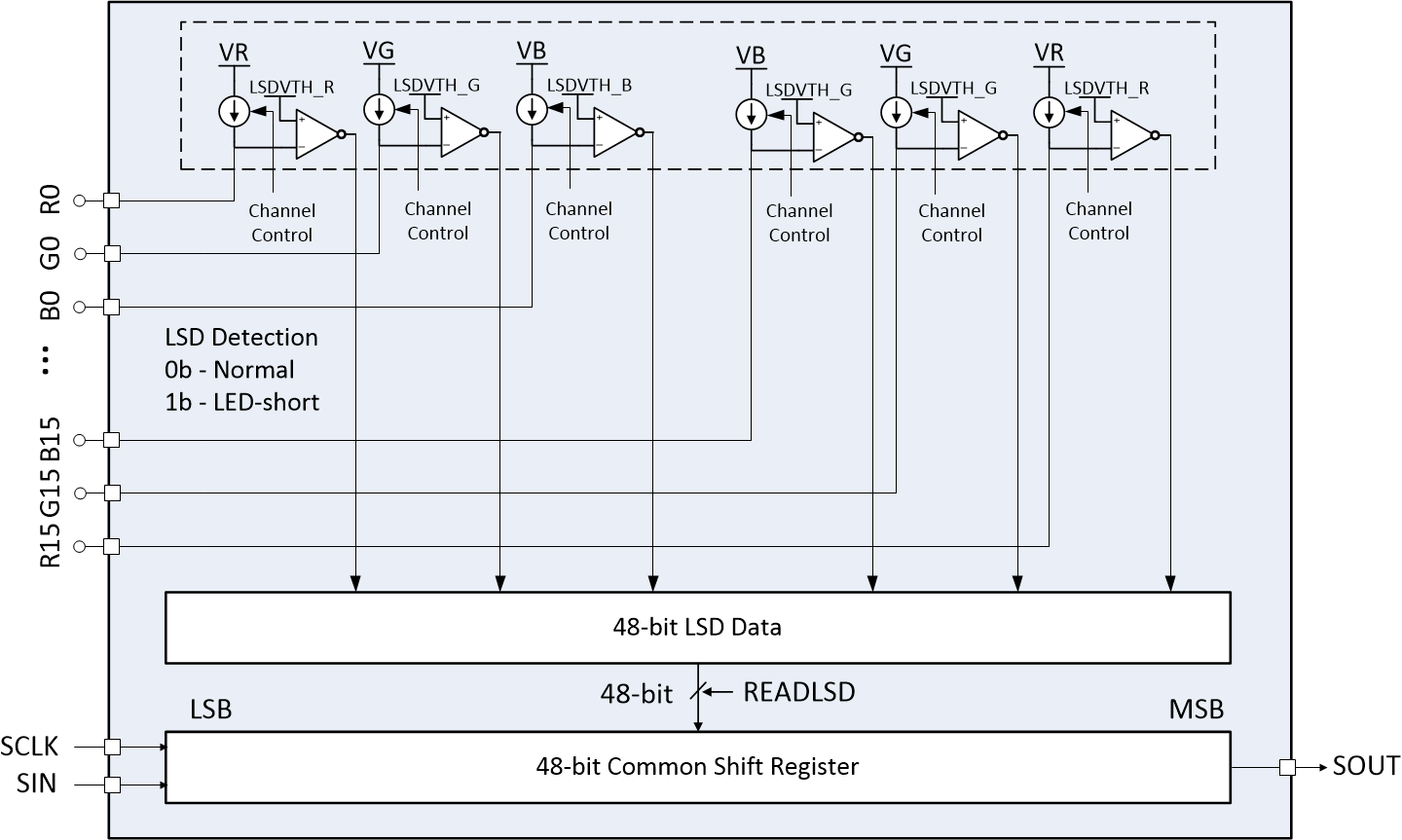ZHCSO29 July 2021 LP5890
PRODUCTION DATA
- 1 特性
- 2 应用
- 3 说明
- 4 Revision History
- 5 说明(续)
- 6 Pin Configuration and Functions
- 7 Specifications
-
8 Detailed Description
- 8.1 Overview
- 8.2 Functional Block Diagram
- 8.3
Feature Description
- 8.3.1 Independent and Stackable Mode
- 8.3.2 Current Setting
- 8.3.3 Frequency Multiplier
- 8.3.4 Line Transitioning Sequence
- 8.3.5 Protections and Diagnostics
- 8.4 Device Functional Modes
- 8.5 Continuous Clock Series Interface
- 8.6 PWM Grayscale Control
- 8.7 Register Maps
- 9 Application and Implementation
- 10Power Supply Recommendations
- 11Layout
- 12Device and Documentation Support
- 13Mechanical, Packaging, and Orderable Information
8.3.5.4.1 LED Short and Weak Short Detection
The LED Short Detection (LSD) function detects faults caused by a short circuit in any LED. LSD was realized by comparing the OUTn voltage to the LSD threshold voltage. If the OUTn voltage is lower than the threshold voltage, the corresponding output LSD bit is set to 1 to indicate an short LED, otherwise, the output of that LSD bit is 0. LSD data output by the detection circuit are valid only during the OUTn turning on period.
LSD weak short can be detected by adjusting threshold voltage, which level is set by LSDVTH_R/LSDVTH_G/LSDVTH_B (for more details, see FC3).
Figure 8-9 shows the equivalent circuit of LED short detection.
 Figure 8-9 LED Short Detection Circuit
Figure 8-9 LED Short Detection CircuitThe LED short detection function records the position of the short LED, which contains the scan line order and relevant channel number. The scan line order is stored LSD_LINE_WARN register (for more details, see FC13), and the channel number is latched into the internal 48-bit LSD data register (fore more details see FC15) at the end of each segment. Figure 8-10 shows the bit arrangement of the LSD data register.
 Figure 8-10 Bit Arrangement in the LSD Data Register
Figure 8-10 Bit Arrangement in the LSD Data Register